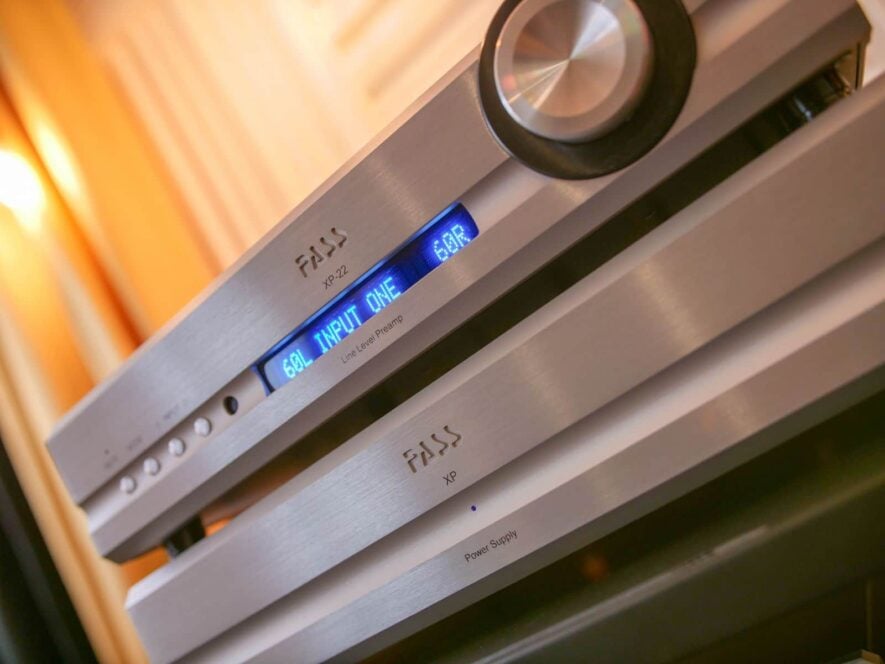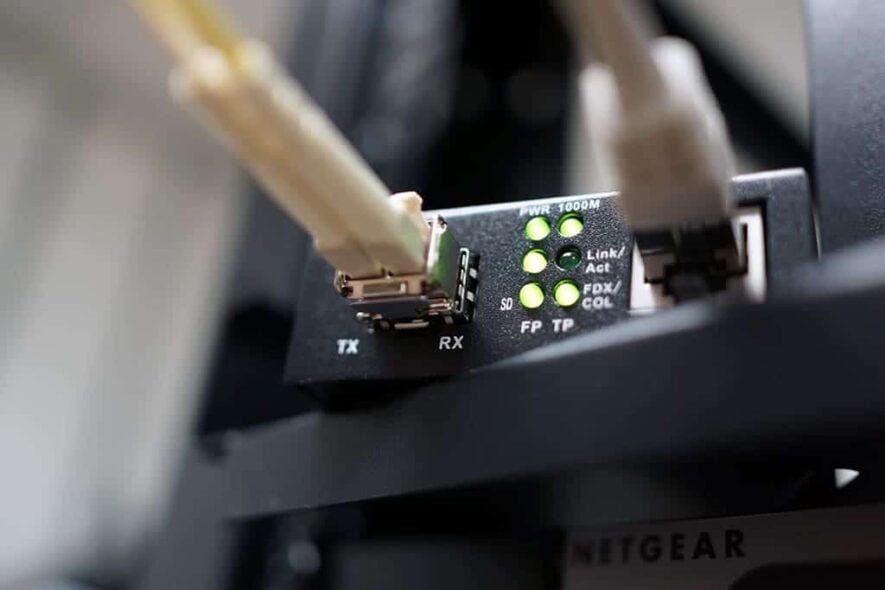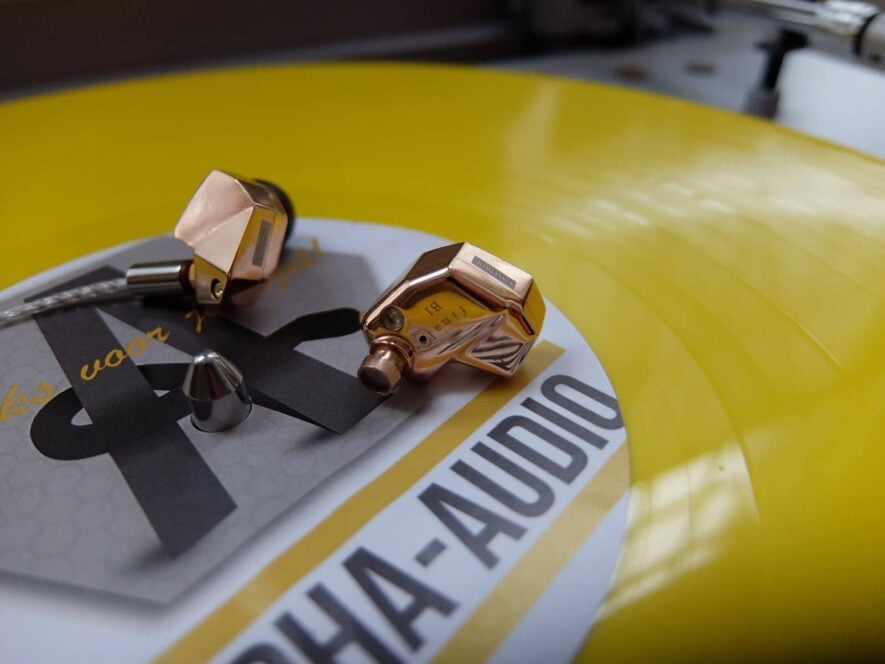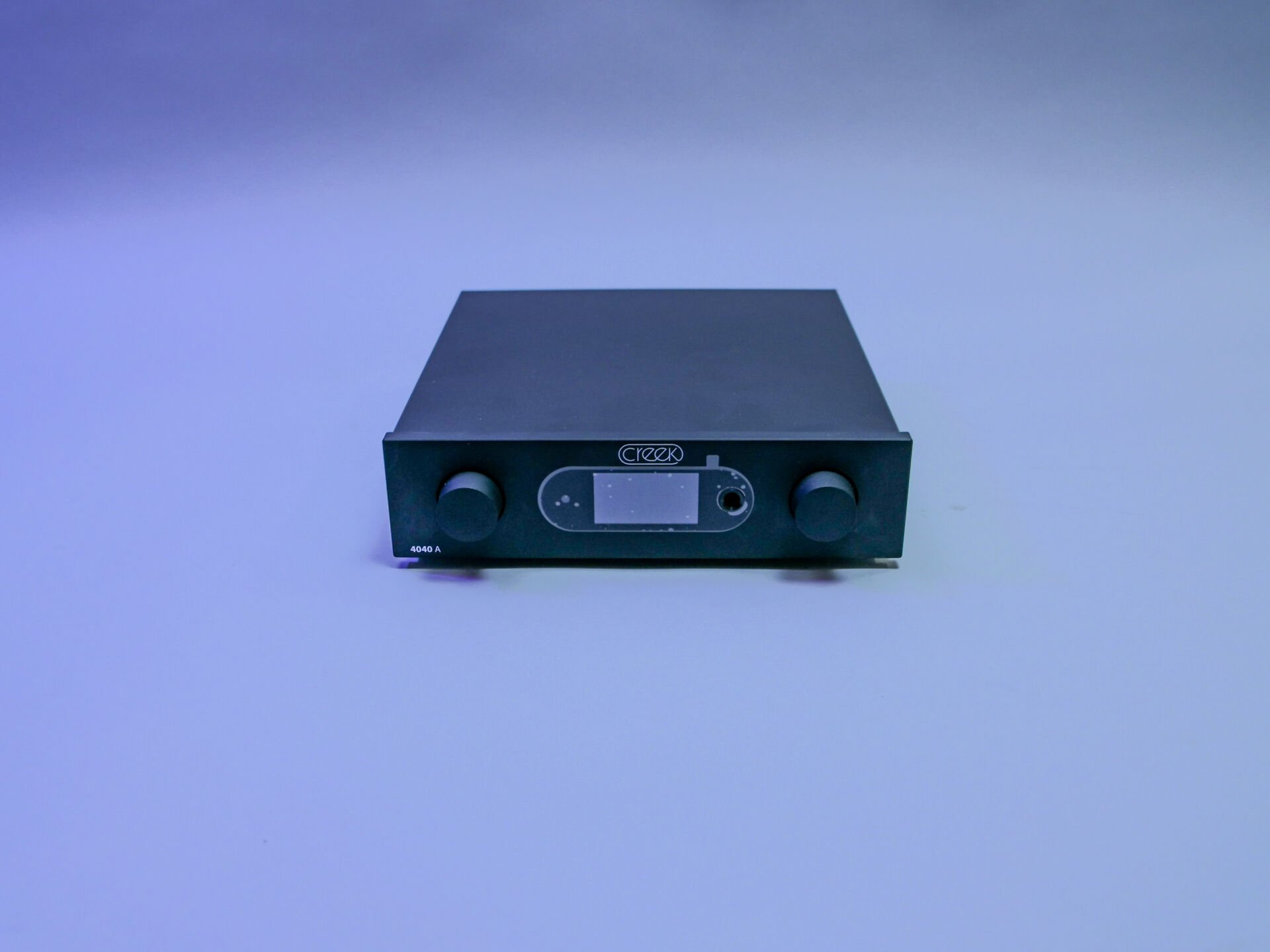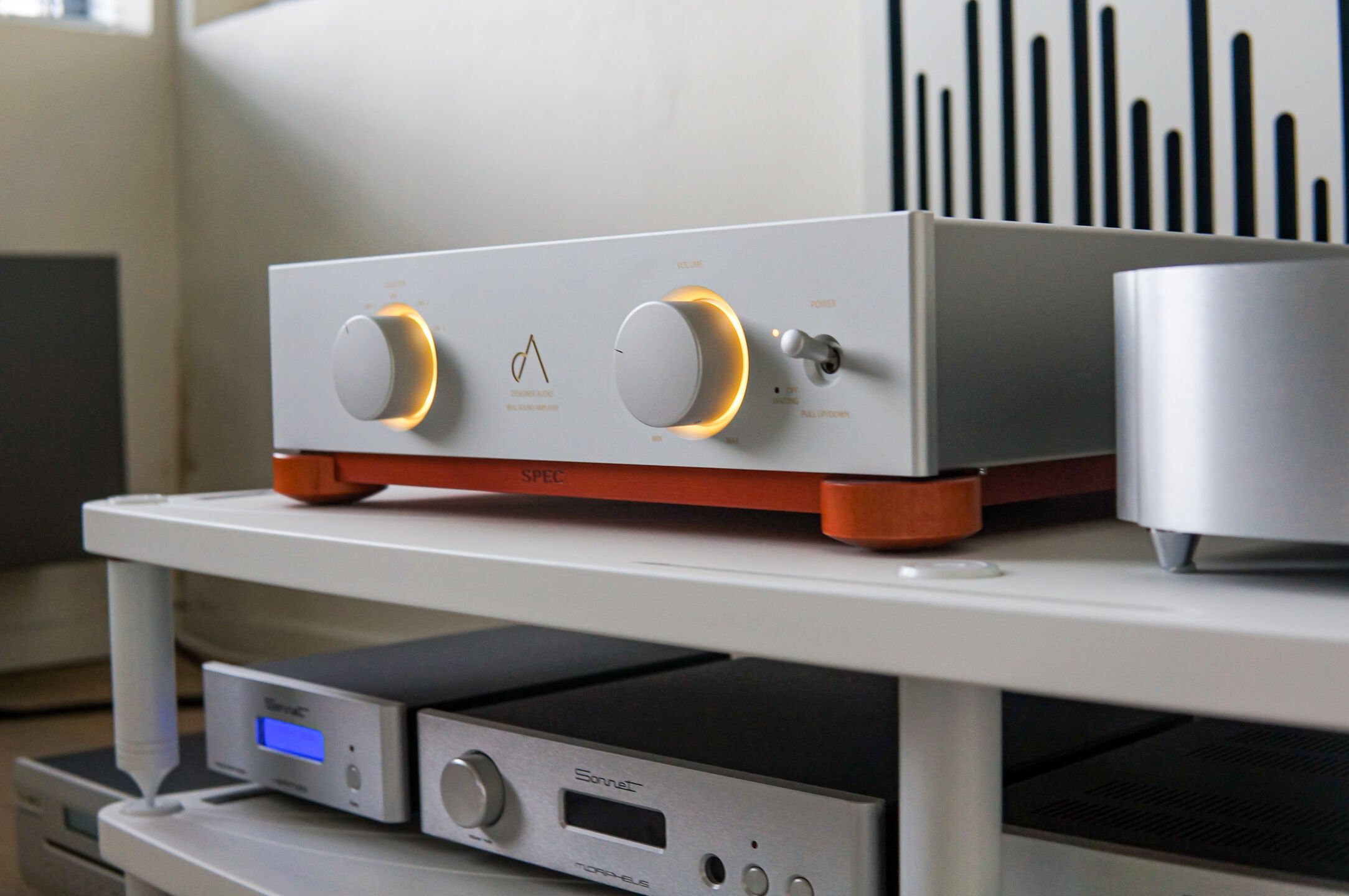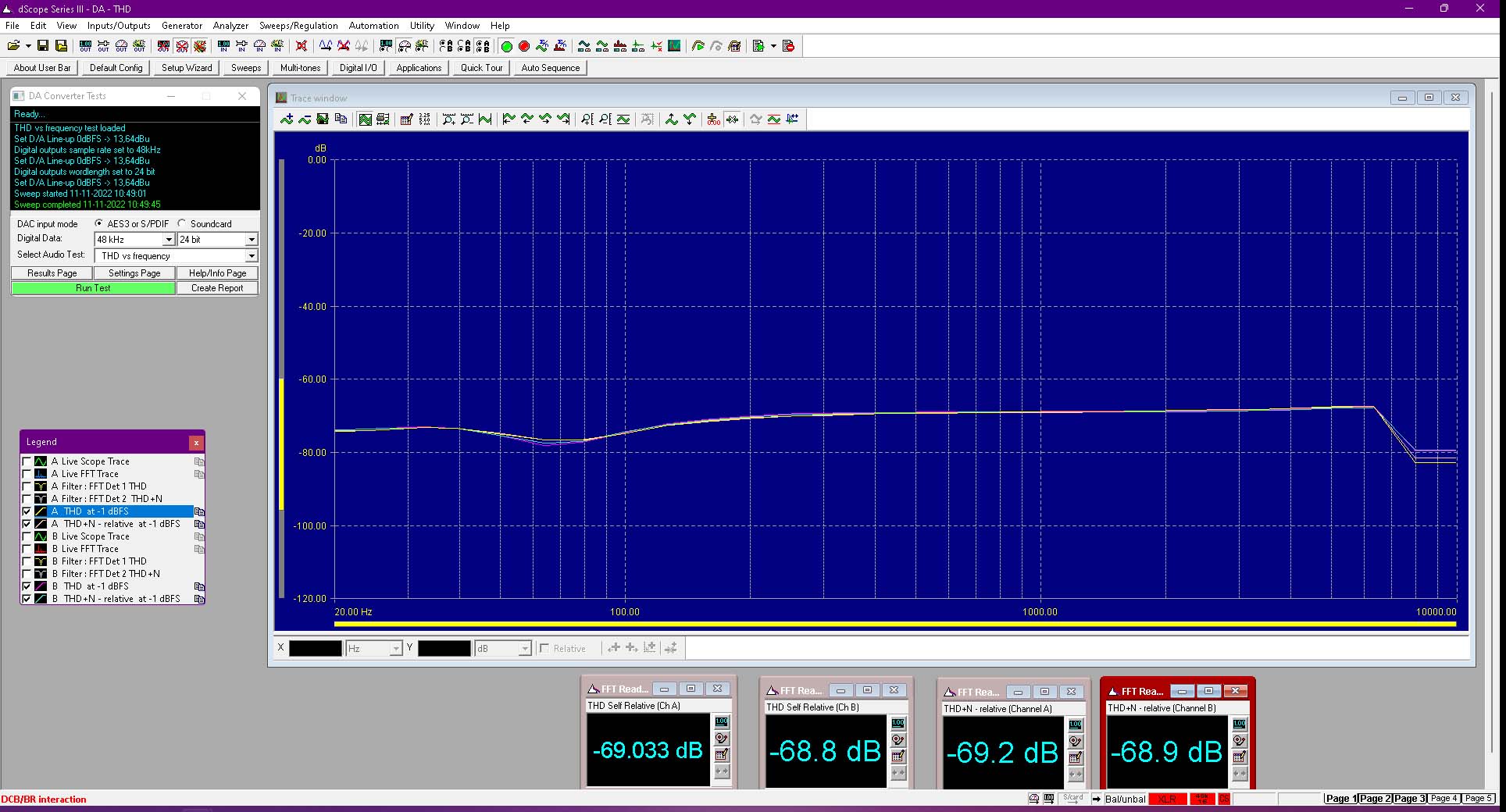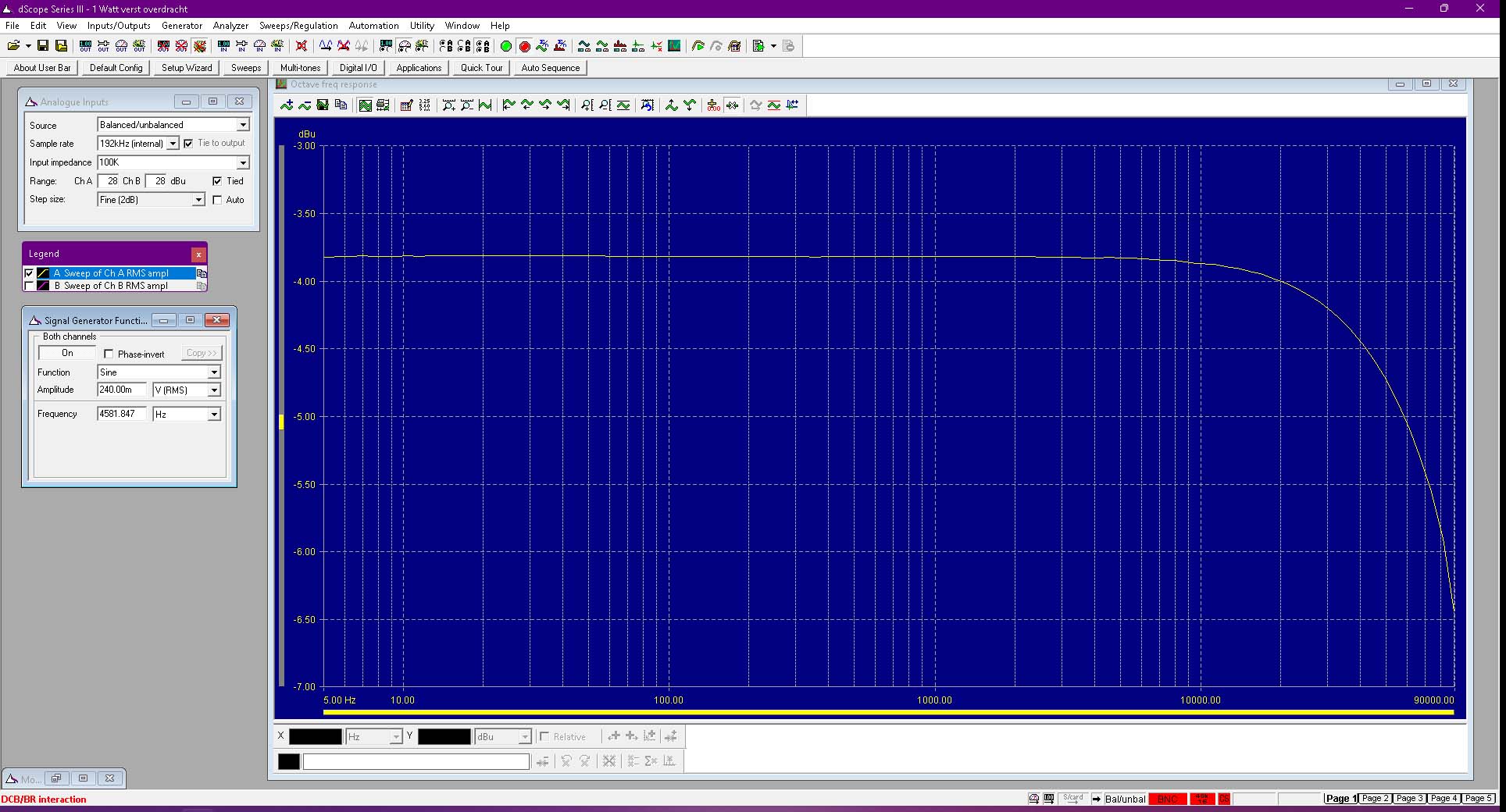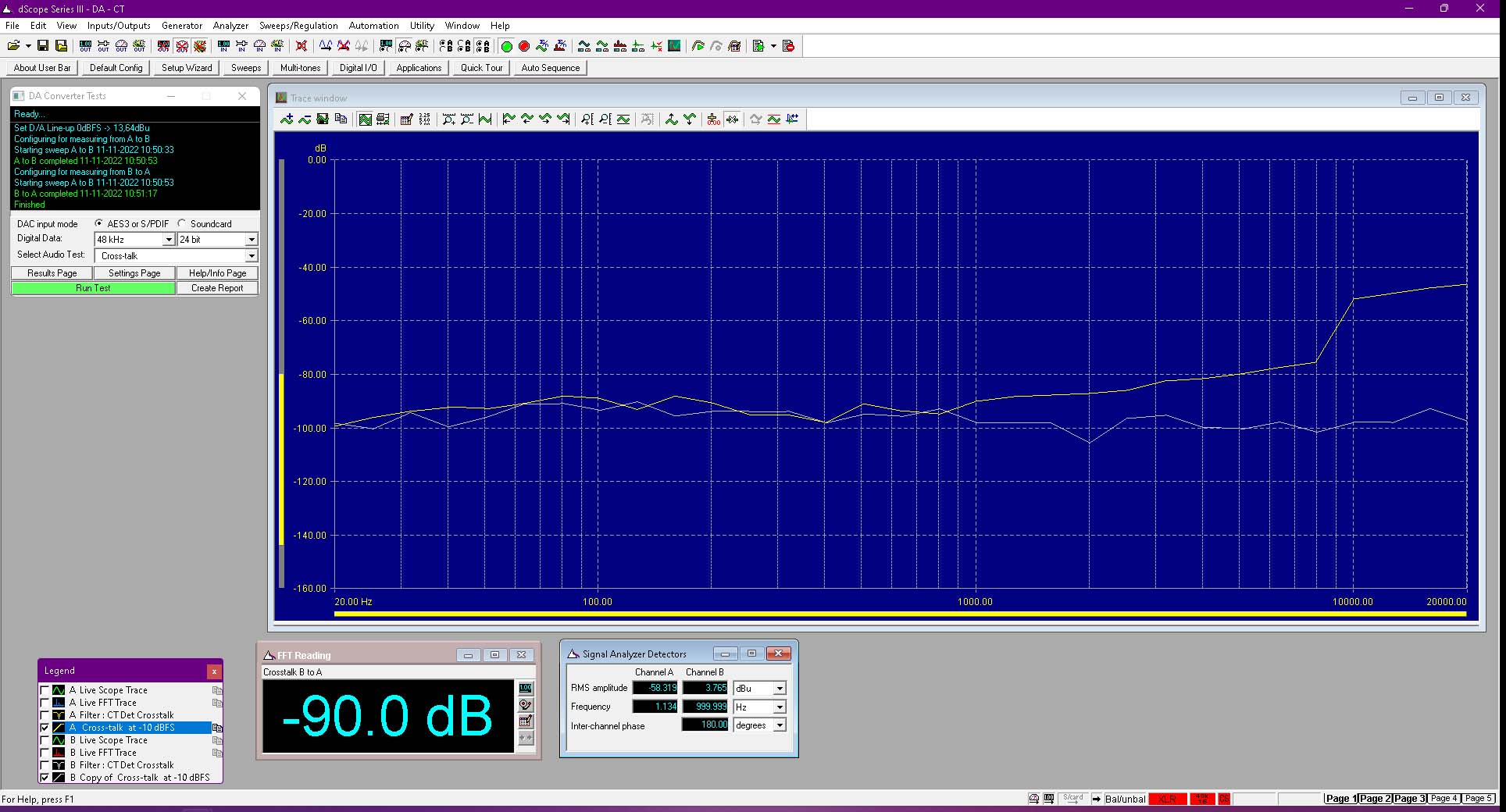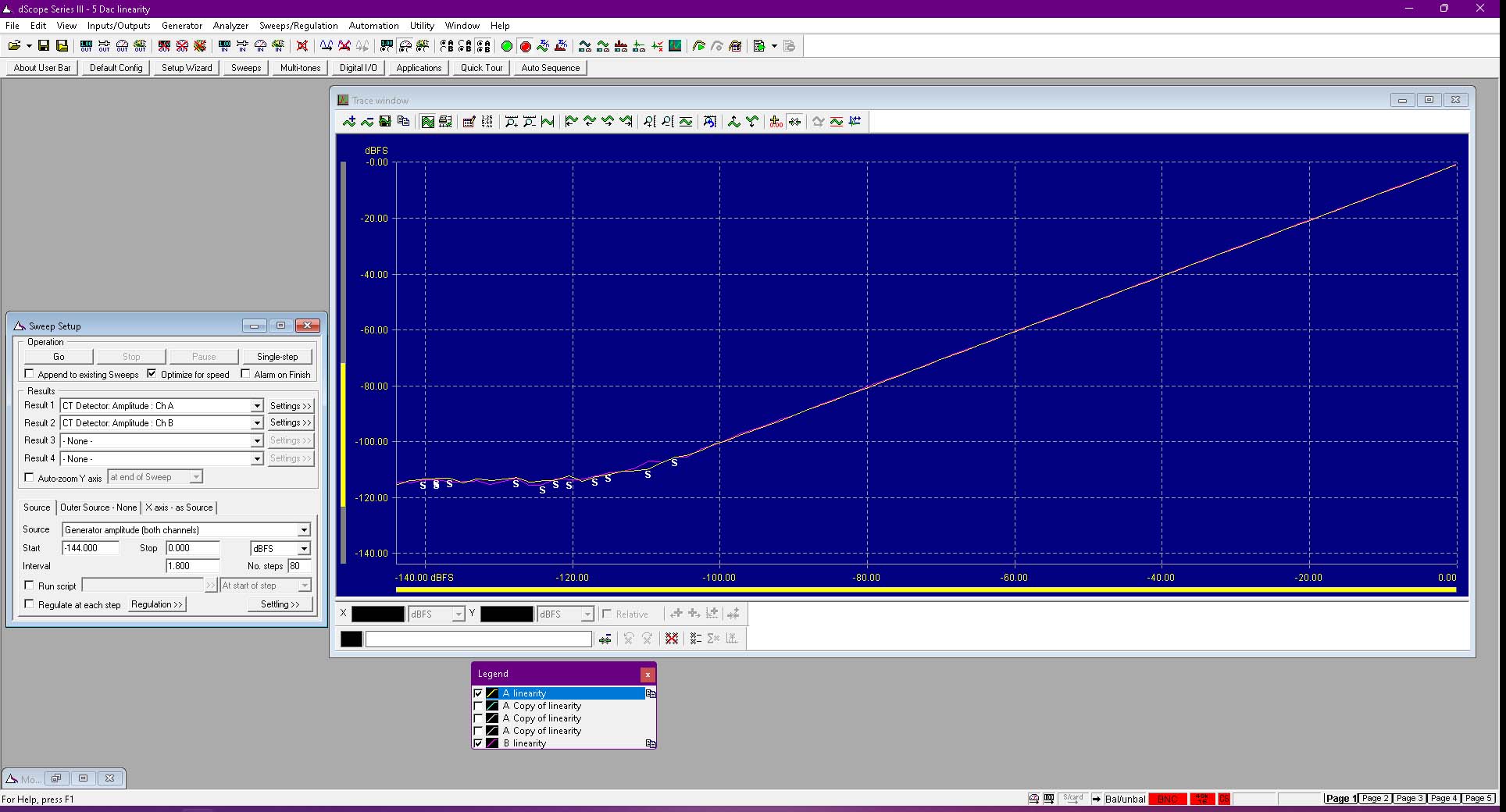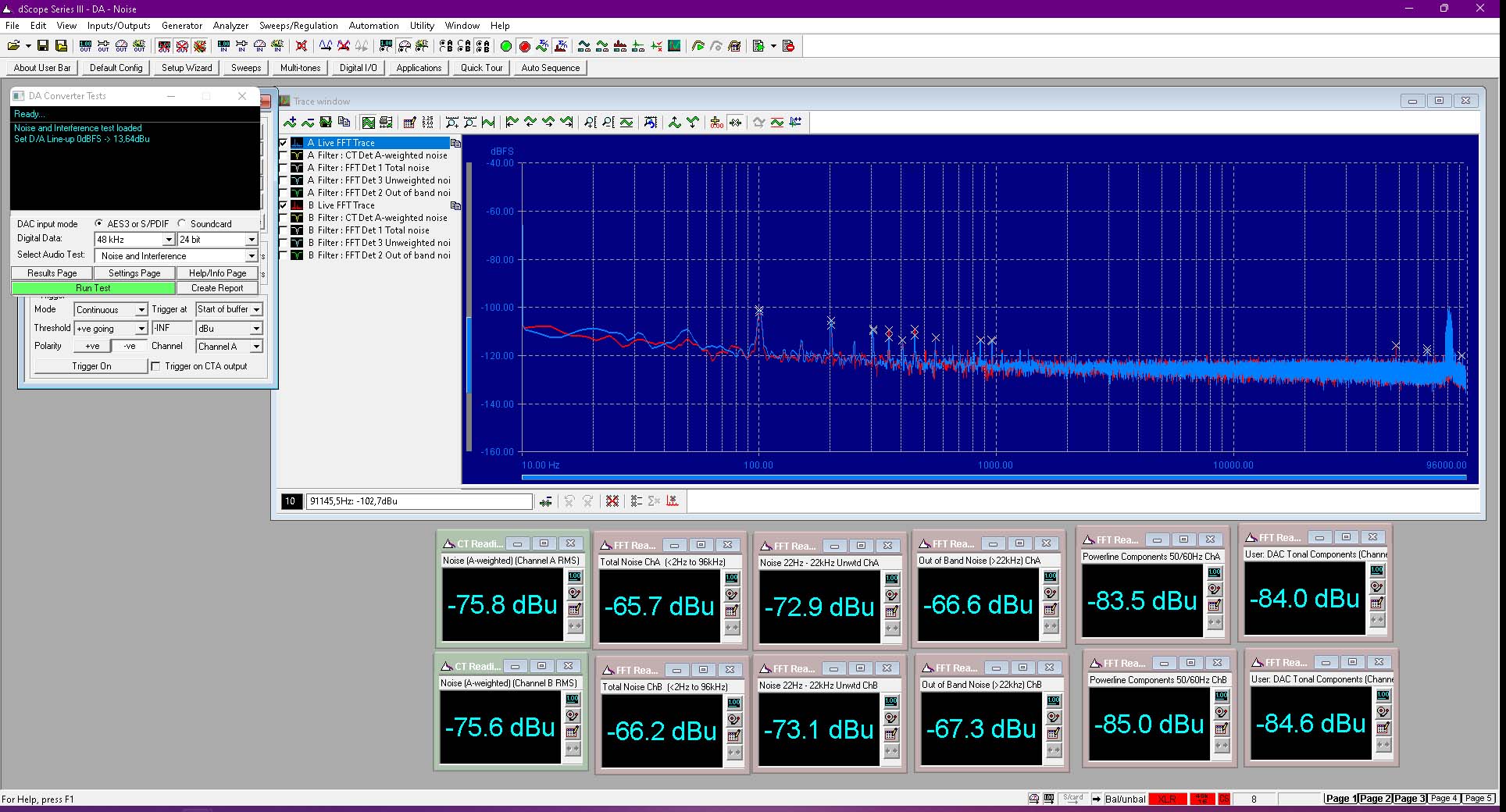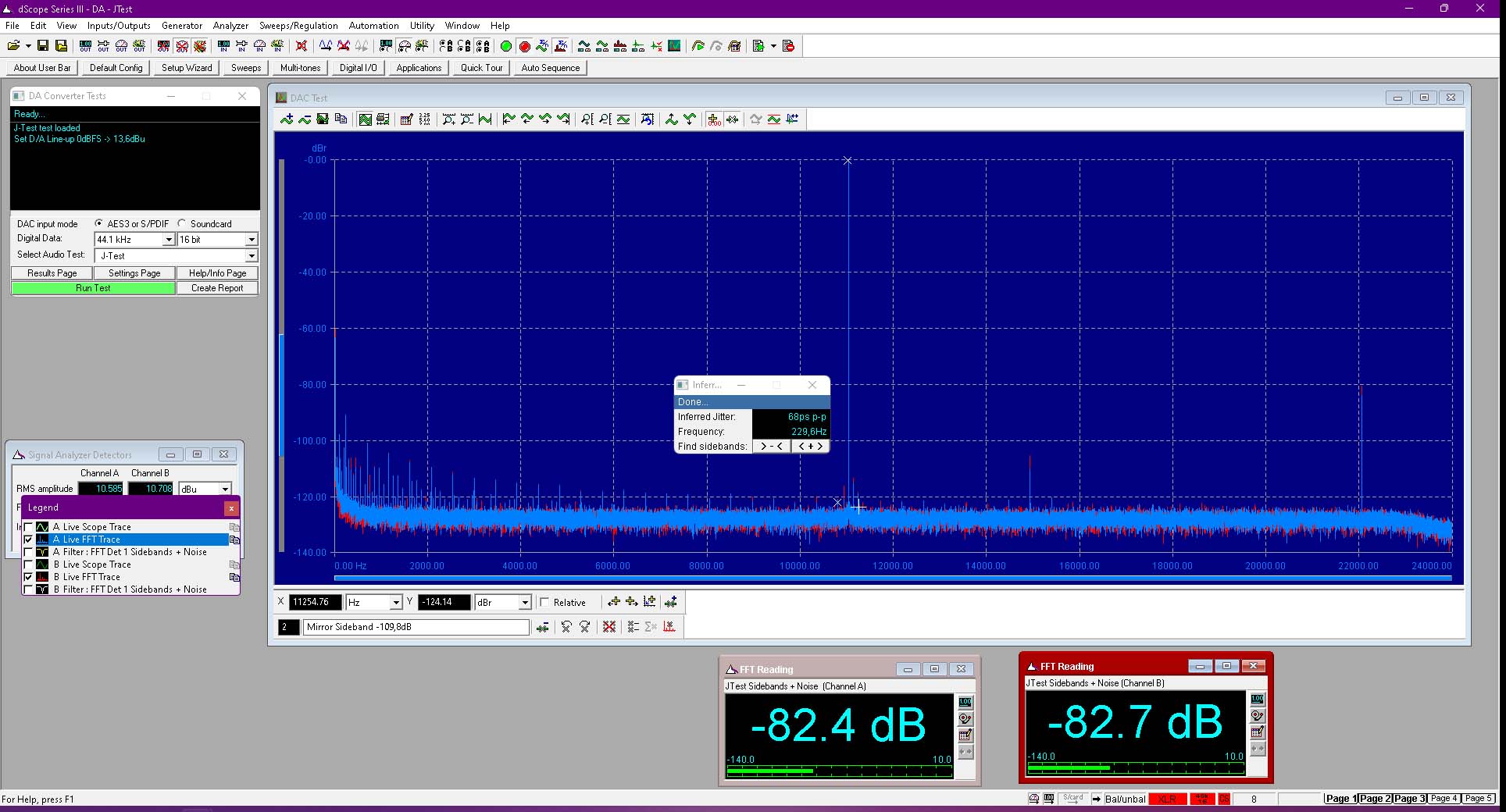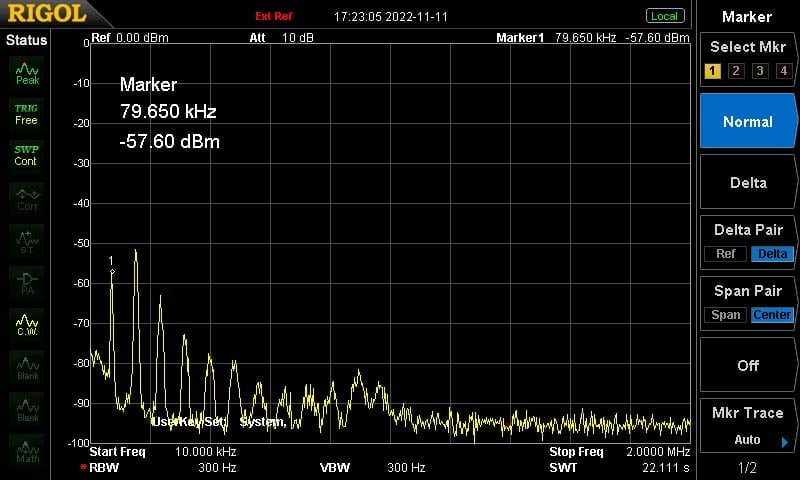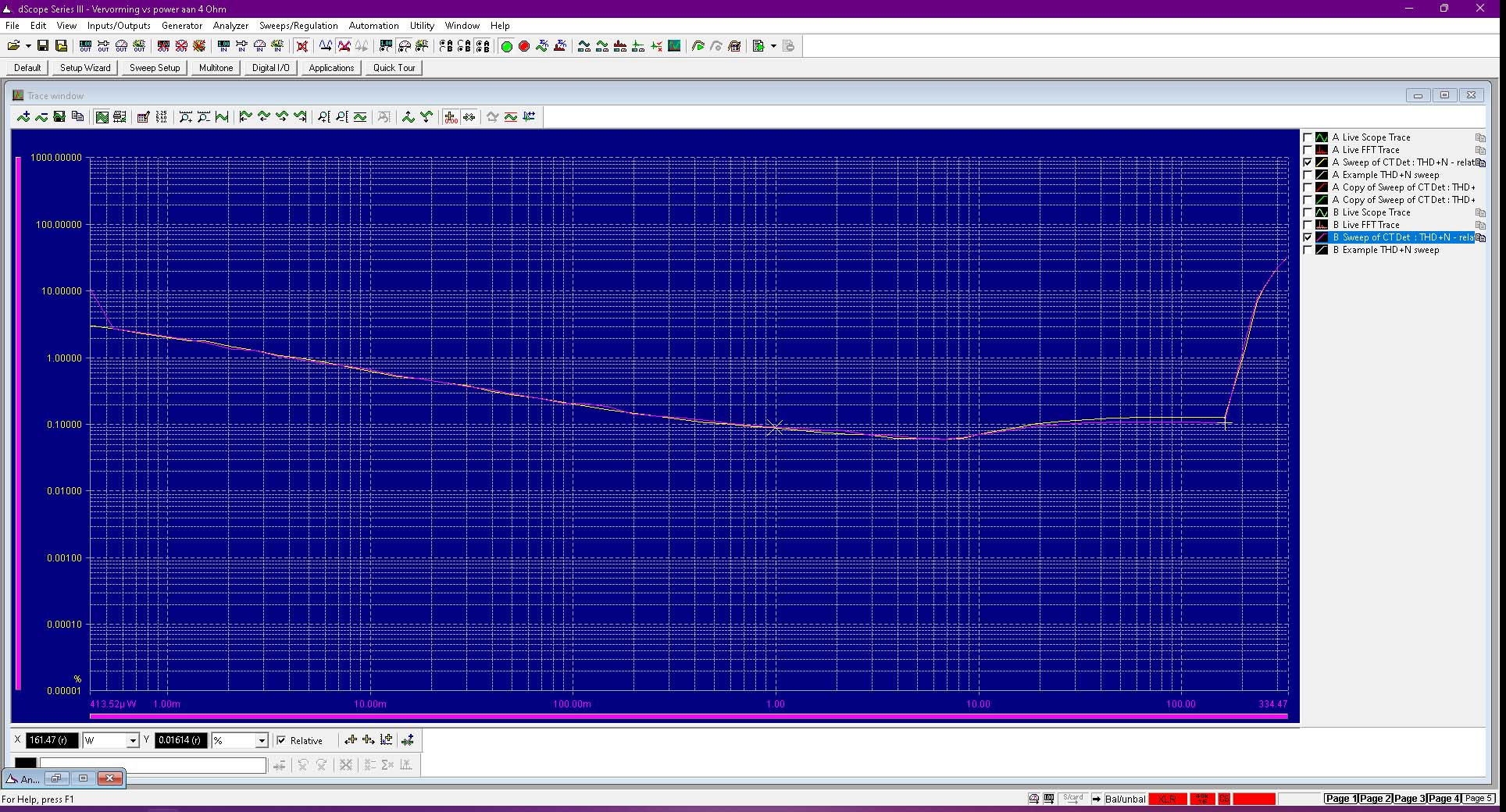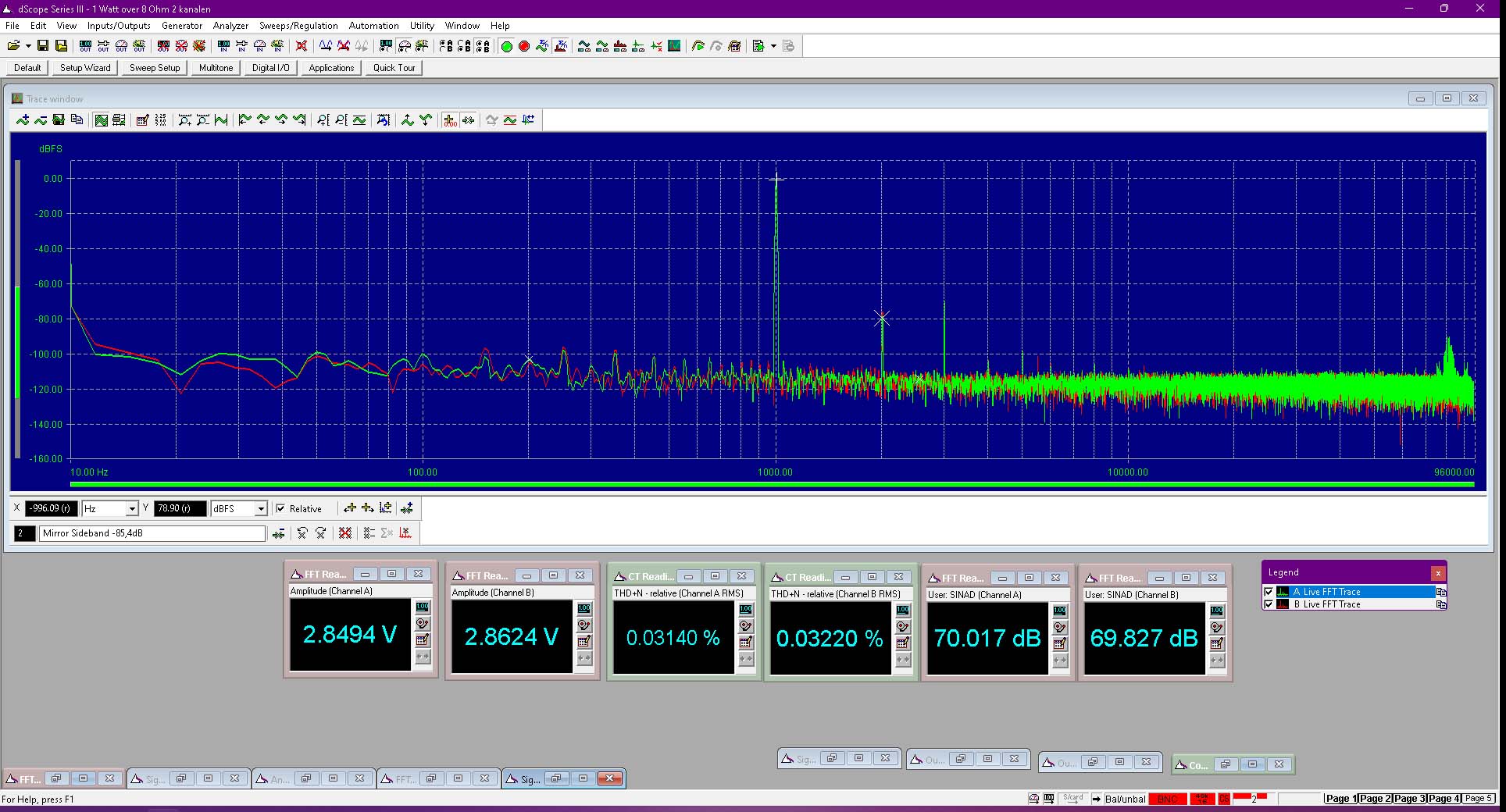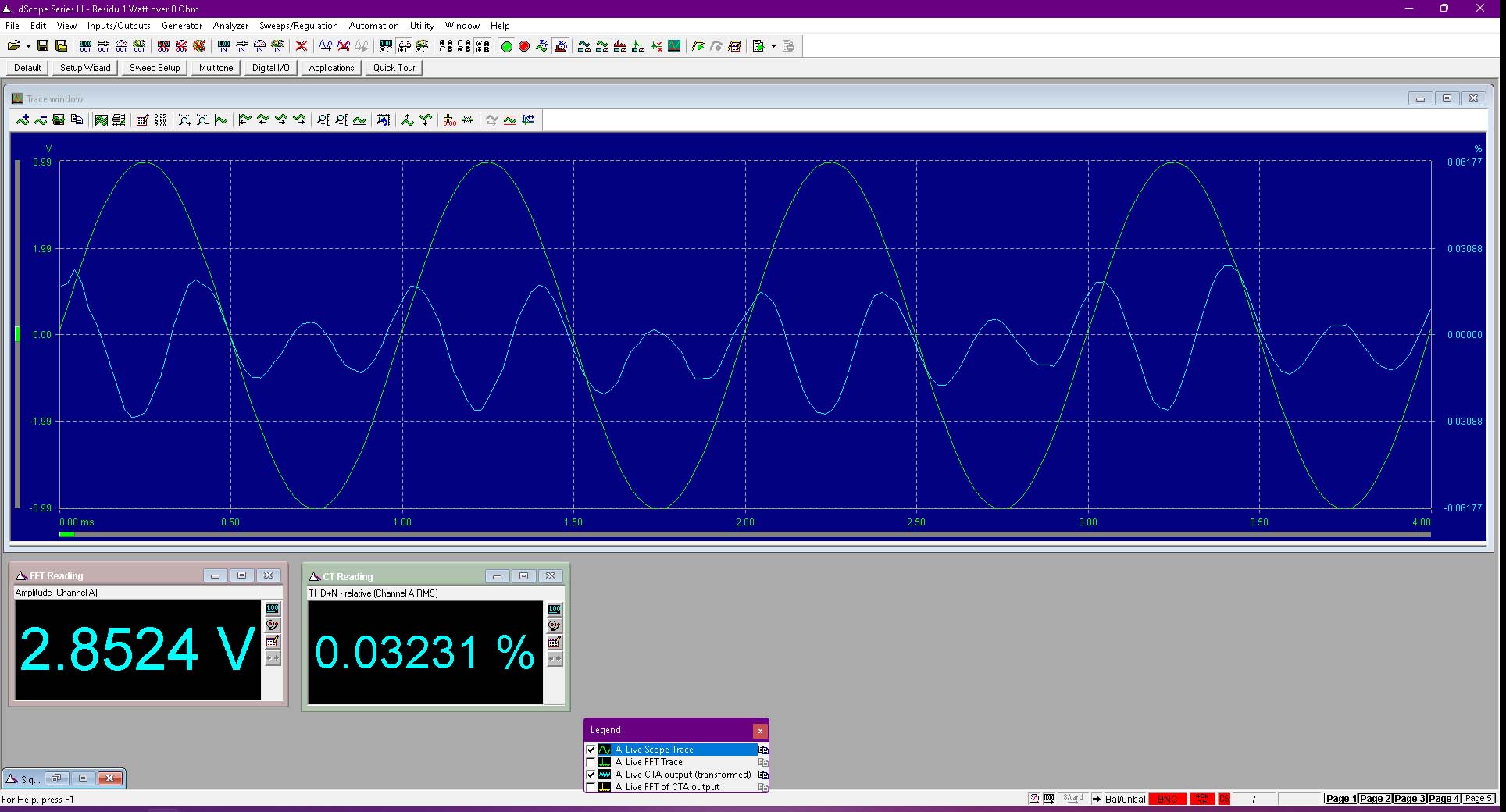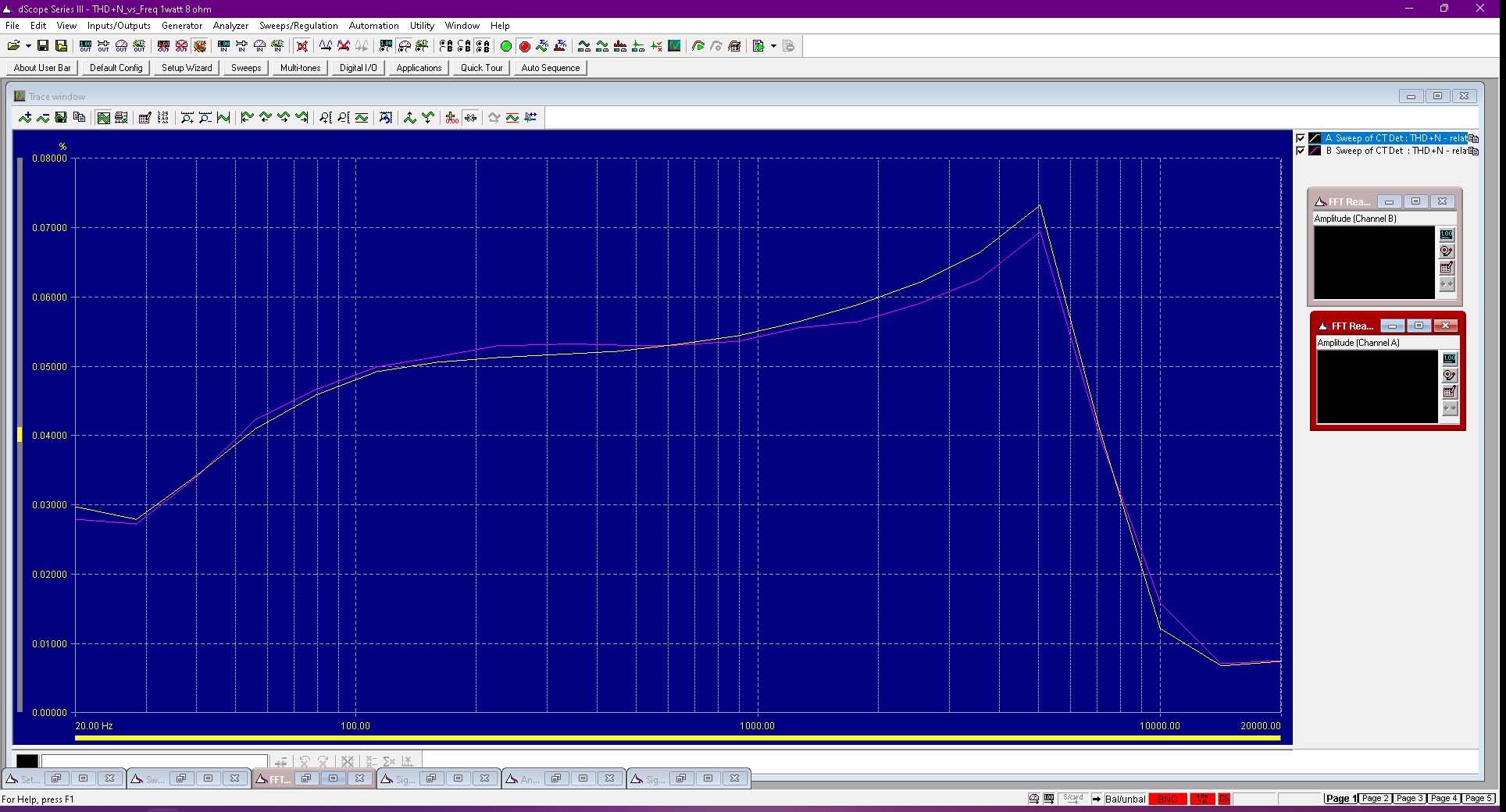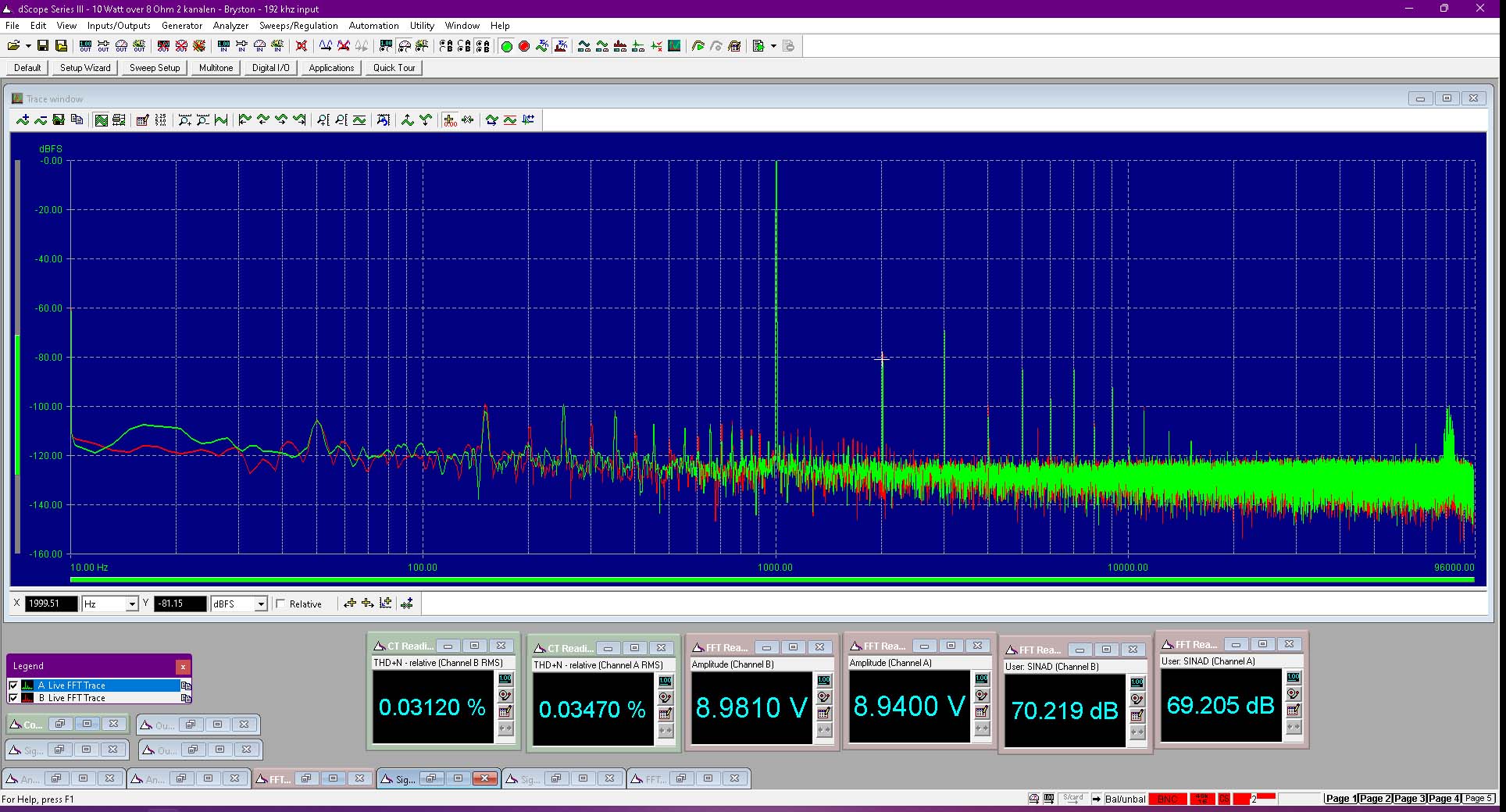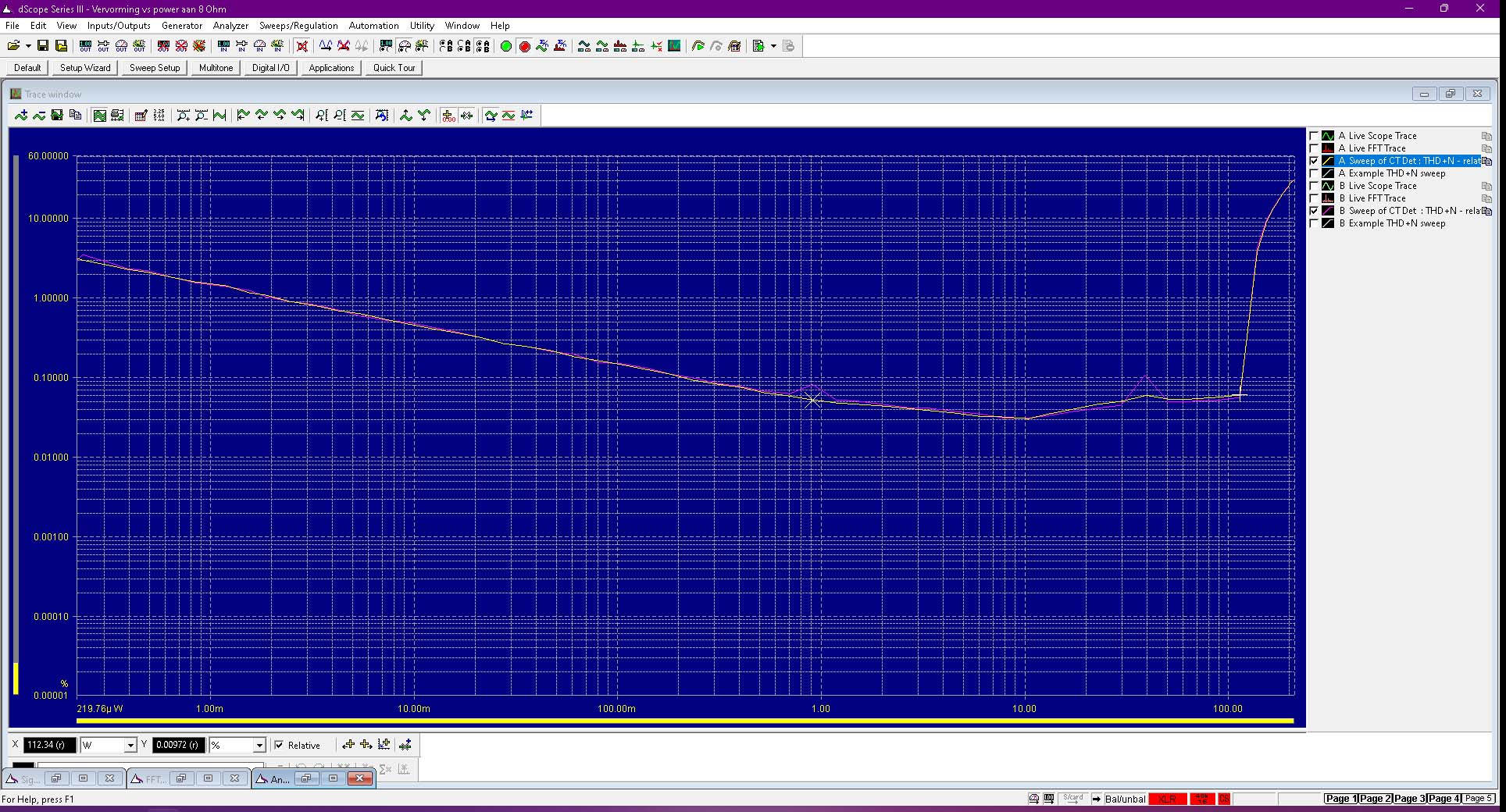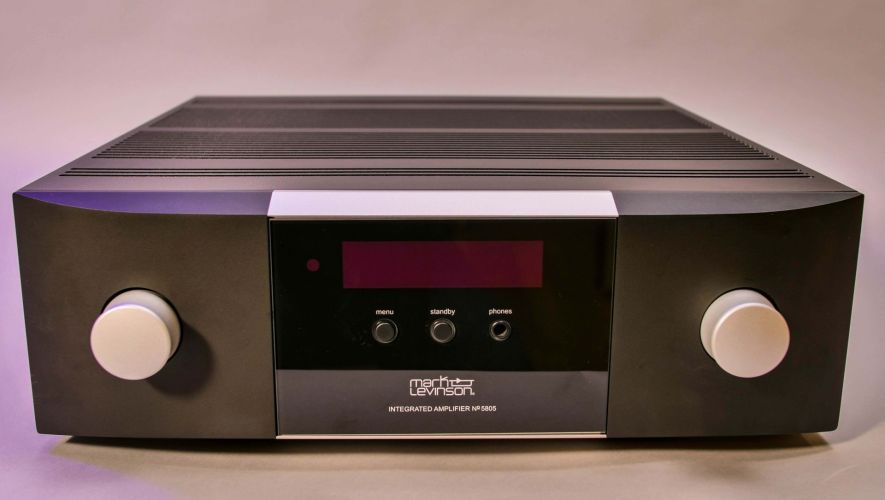

Measurements and conclusion
Contents

Measurements Mark Levinson 5805
DAC board measurements
Mark Levinson did not go for “ultra-tight” measurements. That’s immediately obvious. Like a brand like Pass Labs, a balance has been struck between low noise floor, feedback and smoothness and detail in the reproduction. Lots of feedback makes for nice measurements, but also often makes for a somewhat drier presentation. Although it seems that Mark Levinson does use more feedback than Nelson Pass in his designs (fewer “harmonics” in the measurements). However, the damping factor is between 70 and 80 which is quite low. The X150.8 has a damping factor of around 200.
The vester shows a noise floor of around -110dB. At the end of the measurement – around 80 kHz – we see a bump in the noise. This can also be seen in the power supply measurement. That bump ticks the -90dB on the vertical scale. It looks like switching noise from a chip that can be measured through both the speaker output and pre-out as well as the power supply. The question is how audible it is, of course. It is still low and it is at 80 kHz.
In terms of distortion and power delivery, we have no comments. That’s just fine. Distortion is low – even within the first watt – and power comes out just fine in both 8 and 4 ohms. We encountered no problems while measuring. Also striking is how even the channels are. Without doubt, that gives calmness and richness to the stereo image!
The dac is also nicely implemented. We measured via AES input and the pre-out in this test. Response is nicely straight throughout. Crosstalk is around -90dB. The linearity measurement shows that from -110dB / -115dB the dac picks up. That’s neat for an integrated dac. It is extremely difficult to get better measurements than this in an integrated model.

